You can create a template project by copying the customization of an existing project. This option copies customization from the project but does not copy project data.
You can choose to link the newly created template to the project from which it is copied. This enables the template administrator to apply template customization changes to the linked project.
Note:
-
If the project from which you create the template contains workflow scripts, the scripts must be converted after the template is created. This enables the template administrator to apply template workflow customization to linked projects. For details, see this KB article.
-
Version Control: If you copy a version control enabled project, the new template is created with version control enabled.
To create a template from an existing project:
-
In Site Administration, click the Site Projects tab.
-
Select the domain where you want to create the template.
-
Click the Create Template button. The Create Template dialog box opens.
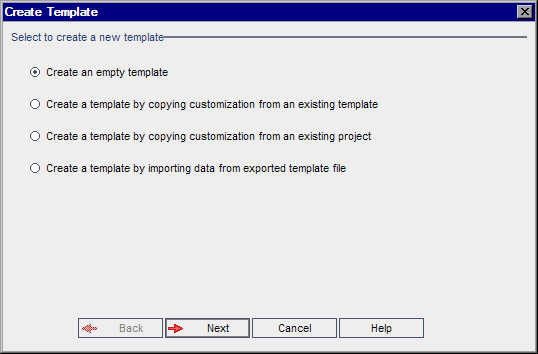
-
Select Create a template by copying customization from an existing project and click Next. The Copy from Project Customization dialog box opens.
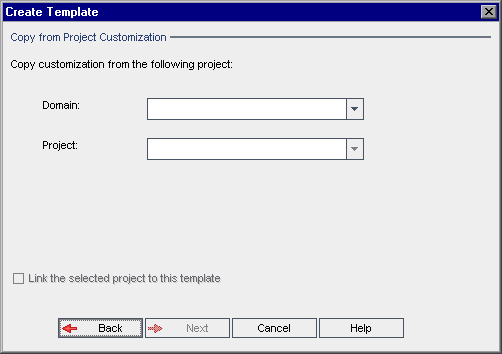
-
In the Domain box, select the domain where the project you want to copy is located.
-
In the Project box, select the project you want to copy.
-
Select Link the selected project to this template to link the project to the newly created template. This enables the template administrator to apply template customization changes to the linked project.
Note: After you link a project to a template, the template administrator must apply template customization to the project. This applies the customization from the template to the linked project, and sets the applied customization to read-only in the project. For details, see Applying Template Customization to Linked Projects.
-
Click Next. The following dialog box opens.
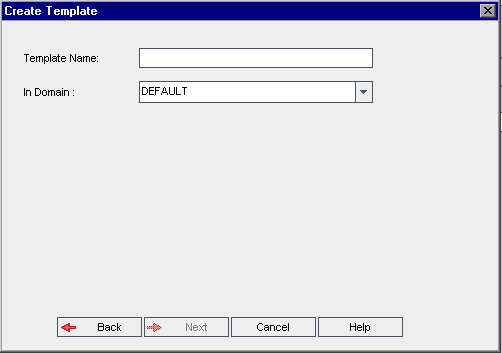
-
In the Template Name box, type a name for the template. The template name cannot be longer than 30 characters and cannot include any of the following characters: = ~ ` ! @ # $ % ^ & * ( ) + | { } [ ] : ' ; " < > ? , . / \ -
-
In the In Domain box, select a domain.
Tip: After the template has been created, you can move it to a different domain in the Projects list using a drag-and-drop operation.
-
Click Next. The following dialog box opens.
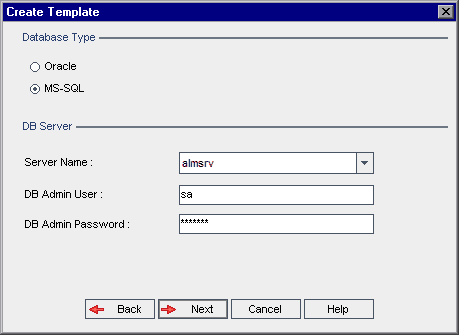
-
Under Database Type, select Oracle or MS-SQL.
The default values defined for the domain are displayed for Server Name, DB Admin User, and DB Admin Password. If additional database servers are defined, you can select another name from the Server Name list.
Note: For details on defining database servers, see Defining New Database Servers.
-
Click Next.
If your selected database server does not have the text search feature enabled, a message box opens. The message indicates that after this process completes, you can enable the text search feature. For details on enabling the text search feature, see Configuring Text Search.
-
If you are creating a Microsoft SQL template, proceed to step 15. For an Oracle template, the following dialog box opens.
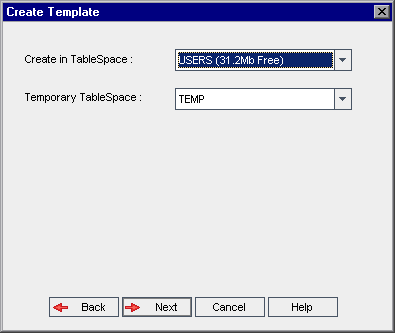
In the Create in TableSpace box, select a storage location that has sufficient space to store the new template. You should not use UNDO as the storage location.
In the Temporary TableSpace box, select a temporary storage location that has sufficient space to store the new template.
Click Next.
-
The Add Template Administrators dialog box opens.
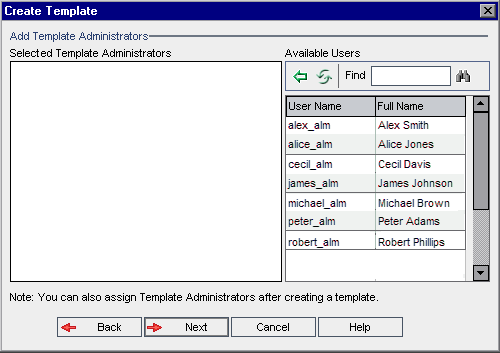
Selected Template Administrators lists users that are assigned as template administrators. Available Users lists users available in the template. When you assign template administrators, the users are moved from the Available Users list to the Selected Template Administrators list. Template administrator users can customize template projects and apply template customization to linked projects. For details, see Cross Project Customization.
-
Refresh. Click the Refresh button
 to refresh the list of available users.
to refresh the list of available users. -
Find. Type the name of a user in the Find box, and click the Find button
 to search the Available Users list.
to search the Available Users list. -
Add Selected Users. Select the users you want to assign as template administrators, and click the Add Selected Users button
 . Alternatively, double-click a user name. The selected users are moved to the Selected Template Administrators list.
. Alternatively, double-click a user name. The selected users are moved to the Selected Template Administrators list. -
Delete. To remove a user from the Selected Template Administrators list, right-click the user name and click Delete.
You can also assign template administrators after you have created the template. For details, see Assigning Project Administrators.
-
-
Click Next. The following dialog box opens.
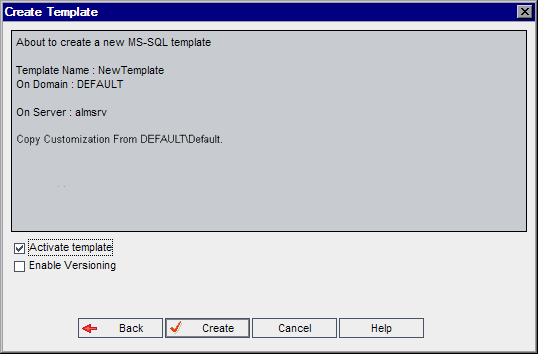
Verify the template details. To change any of the details, click Back.
- Select Activate template to activate the template. Only activated templates are available in the Application Lifecycle Management Login window. For details, see Deactivating and Activating Projects.
- Click Create. The new template is added to the Projects list under Template Projects.











